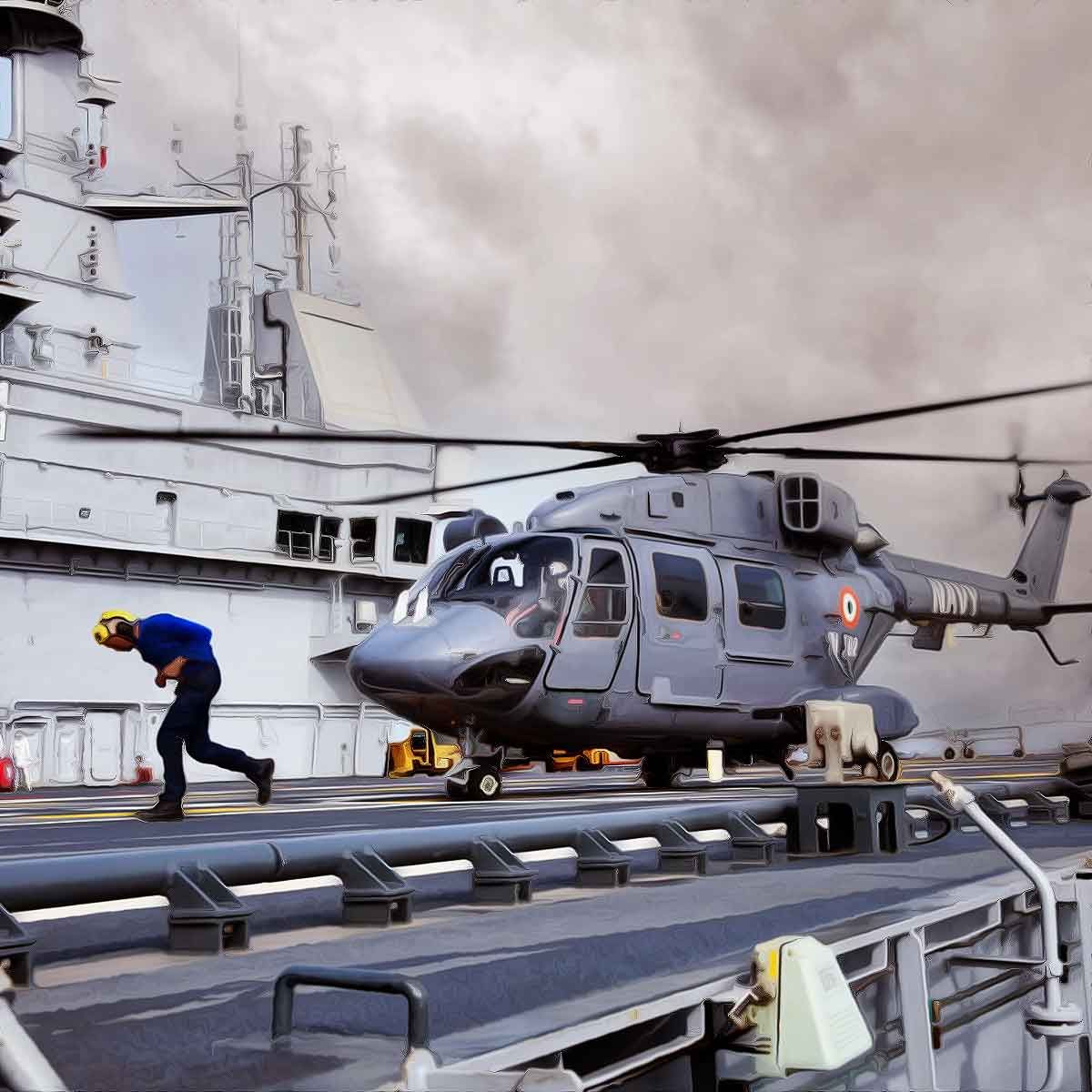More Coverage
Twitter Coverage
Satyaagrah
Written on
Satyaagrah
Written on
Satyaagrah
Written on
Satyaagrah
Written on
Satyaagrah
Written on
JOIN SATYAAGRAH SOCIAL MEDIA
“Anything worth doing is worth overdoing. Moderation is for cowards”: PM Modi commissions INS Vikrant, India’s first indigenous aircraft carrier that has mix of 30 aircraft, could fly MiG 29k fighter aircraft in anti-air, anti-surface and land attack role

New Delhi: Prime Minister Narendra Modi today commissioned India’s first indigenous aircraft carrier INS Vikrant at Cochin Shipyard Limited in Kochi.
PM Modi also received the Guard of Honour as he arrived for the Commissioning ceremony of the first indigenous aircraft carrier.
|
Designed by the Indian Navy’s in-house Warship Design Bureau (WDB) and built by Cochin Shipyard Limited, a Public Sector Shipyard under the Ministry of Ports, Shipping, and Waterways, Vikrant has been built with state-of-the-art automation features and is the largest ship ever built in the maritime history of India.
The Indigenous Aircraft Carrier is named after her illustrious predecessor, India’s first aircraft carrier, which had played a vital role in the 1971 war.
|
It has a large amount of indigenous equipment and machinery, involving major industrial houses in the country as well as over 100 MSMEs. With the commissioning of Vikrant, India will have two operational aircraft carriers, which will bolster the maritime security of the nation.
As per the Indian Navy, the 262-meter-long carrier has a full displacement of close to 45,000 tonnes which is much larger and more advanced than her predecessor.
Speaking about the specifications of IAC Vikrant, Vice Admiral Hampiholi had said: “Vikrant carries a mix of about 30 aircraft. It could fly the MiG 29k fighter aircraft in anti-air, anti-surface, and land attack roles. It will be able to operate the Kamov 31 which is an early air warning helicopter, the recently inducted but yet-to-be commissioned MH-60R which is a multi-role helicopter as also our very indigenous ALH. It displaces about 45,000 tonnes which is definitely the largest warship in the Indian naval inventory.”
|
With Vikrant, India has joined a select group of nations having the niche capability to indigenously design and build an aircraft carrier.
IAC Vikrant consists of 14 decks with 2,300 compartments that can carry around 1,500 sea warriors and to cater to the food requirements, around 10,000 chapatis or rotis are made in the ship’s kitchen, which is called the ship’s galley.
The ship is powered by four Gas Turbines totaling 88 MW power and has a maximum speed of 28 Knots. Built at an overall cost of close to Rs 20,000 crores, the project has progressed in three Phases of the contract between MoD and CSL, concluded in May 2007, December 2014, and October 2019 respectively. The ship’s keel was laid in Feb 2009, followed by launching in August 2013.
With an overall indigenous content of 76 percent, IAC is a perfect example of the nation’s quest for “Aatma Nirbhar Bharat” and provides a thrust to Government’s ‘Make in India’ initiative.
|
Vikrant has been built with a high degree of automation for machinery operation, ship navigation, and survivability, and has been designed to accommodate an assortment of fixed-wing and rotary aircraft.
The ship would be capable of operating an air wing consisting of 30 aircraft comprising of MIG-29K fighter jets, Kamov-31, MH-60R multi-role helicopters, in addition to indigenously manufactured Advanced Light Helicopters (ALH) and Light Combat Aircraft (LCA) (Navy). Using a novel aircraft-operation mode known as STOBAR (Short Take-Off but Arrested Landing), the IAC is equipped with a ski- jump for launching aircraft, and a set of ‘arrester wires’ for their recovery onboard.
The ship has a large number of indigenous equipment and machinery, involving major industrial houses in the country viz. BEL, BHEL, GRSE, Keltron, Kirloskar, Larsen & Toubro, Wartsila India etc. as well as over 100 MSMEs.
|
The indigenization efforts have also led to the development of ancillary industries, besides the generation of employment opportunities and bolstering plough back effect on the economy, both locally as well as pan-India.
A major spin-off of this is the development and production of indigenous warship-grade steel for the ship through a partnership between the Navy, DRDO, and Steel Authority of India (SAIL), which has enabled the country to become self-sufficient with respect to warship steel. Today all the warships being built in the country are being manufactured using indigenous steel, added the Navy.
Several design iterations, including the use of 3D Virtual Reality models and advanced engineering software, were used by the Directorate of Naval Design in shaping the design of the carrier. CSL had also upgraded its shipbuilding infrastructure as well as enhanced productivity skills during the building of the ship.
|
References:
newsroompost.com
 Support Us
Support Us
Satyagraha was born from the heart of our land, with an undying aim to unveil the true essence of Bharat. It seeks to illuminate the hidden tales of our valiant freedom fighters and the rich chronicles that haven't yet sung their complete melody in the mainstream.
While platforms like NDTV and 'The Wire' effortlessly garner funds under the banner of safeguarding democracy, we at Satyagraha walk a different path. Our strength and resonance come from you. In this journey to weave a stronger Bharat, every little contribution amplifies our voice. Let's come together, contribute as you can, and champion the true spirit of our nation.
 |  |  |
| ICICI Bank of Satyaagrah | Razorpay Bank of Satyaagrah | PayPal Bank of Satyaagrah - For International Payments |
If all above doesn't work, then try the LINK below:
Please share the article on other platforms
DISCLAIMER: The author is solely responsible for the views expressed in this article. The author carries the responsibility for citing and/or licensing of images utilized within the text. The website also frequently uses non-commercial images for representational purposes only in line with the article. We are not responsible for the authenticity of such images. If some images have a copyright issue, we request the person/entity to contact us at This email address is being protected from spambots. You need JavaScript enabled to view it. and we will take the necessary actions to resolve the issue.
Related Articles
- "In our quest for peace, piracy has no port": Indian Navy Chief, Admiral R Hari Kumar visits Duqm, the visit highlights India's maritime diplomacy, counter-piracy operations, and deepens ties with Oman for bolstered security in the Indian Ocean
- "It doesn’t get easier. You just get stronger": Historic - 341 Women Agniveer joined the Indian Navy, their induction not done separately but in the same manner as their male counterparts in a uniform method of selection - Navy chief Adm R Hari Kumar
- “We fight to win and win with a knockout because there is no runner up in wars”: Project 75(I) - South Korea & Spain emerge as new defence allies of India, foreign defence to build 6 Air Independent Propulsions Diesel Attack Submarines for Indian Navy
- "Unity at Sea: AI, and Victory": Breaking silos, the Indian Navy embarks on a visionary voyage, harnessing Artificial Intelligence and fostering synergy with other defence arms, the journey to sculpt the future of victorious maritime battles begins now⚓
- “It is God’s duty to forgive the enemies, but it’s our duty to convene a meeting between the two”: Modi government allows Indian defence forces to get emergency powers to acquire critical weapon systems through a fast-track route without the MoD approval
- "In adversity, a friend is a safe harbour": Indian Naval Ship Kirpan and indigenous-missile Corvette – handed over to Vietnam People’s Navy at the strategic military port Cam Ranh Bay on the South China Sea, regarded a defence post of the Pacific Ocean
- "Grant what thou commandest and then command what thou wilt": India's military set for a historic revamp - The first test-bed ITC slated for a debut this August, revolutionizing the armed forces' structure, other commands to follow ‘One Border One Force’
- “A good Navy is not a provocation to war. It is surest guaranty of peace”: PM Modi to commission first indigenous aircraft carrier INS Vikrant at Cochin Shipyard, warship is 262M long, 62M wide, 59M of height, consist 30 aircraft comprising MiG-29K jets
- Agniveer Scheme: 'Balancing act between the interests of Past, Present and Future', here is all you need to know about the age criteria, salary, facilities, process and more for the recruitment of youth in the Indian Armed Forces
- "The hidden hand of the war will never work without a hidden fist": 24 projects worth over 84,000 crores cleared, Indian Army to receive light tanks under the Project Zorawar, ATGMs, VSHORADs, and combat helmets under Make in India initiative
- “If you want to be proud of yourself, then do things in which you can take pride”: Mahindra Group started deliveries of its fully-indigenous Armoured Light Specialist Vehicle (ALSV) Armado, to the Indian armed forces, accelerates from 0-60 kmph in 12 secs
- 3rd batch of 2630 Agniveers, with 396 women, successfully completed training, passing out in a grand ceremony at INS Chilka on 15 Mar; Reviewed by Adm R Hari Kumar, this event marks a new beginning in their naval careers after 16 intense weeks of training
- "Remember that the greatest crime is to compromise with injustice and wrong": NSA Ajit Doval during the inaugural at Netaji Subhas Chandra Bose Memorial event in New Delhi claimed that "India would not have been partitioned if Subhas Bose was alive"
- "Valor is stability, not of legs and arms, but of courage and the soul": Intense Srinagar operation by the courageous J&K police leads to the successful detention of 43 ex-terrorists & separatists, preventing a revival of the Hurriyat Conference & JKLF
- "Beyond the uniform lies the heart of a nation": Agnipath isn't just reshaping India's Armed Forces—it's forging a new generation of warriors, from rigorous training to national service, an emblematic of change, proving unmatched potential of Indian youth




























